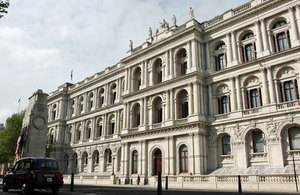PHE opens virtual exhibition sharing plans for Harlow science campus
Press release
Public Health England (PHE) is holding a 2-day virtual exhibition in June to unveil the latest plans for its new public health science campus in Harlow, Essex.

PHE Harlow represents a once in a lifetime opportunity to bring together key public health functions for England on one site. It will be one of the best facilities of its kind in the world – the largest in Europe – and will provide a major boost for the local economy including significant job opportunities.
Public Health England is about to submit its final detailed application to Harlow Council in July. Prior to that, it’s keen to share with the community in and around Harlow and take feedback on the latest designs, images and timeframes.
Normally, this would be done through face-to-face meetings, presentations and a public exhibition at a local venue. Given the COVID-19 outbreak, this is not possible, so PHE has had to find new ways to engage. The solution is a virtual exhibition where visitors can enjoy a virtual fly-through of the site and the Arrivals and Education Centre.
The public exhibition is being held at 2pm to 7pm on Friday 5 June and from 10am to 2pm on Saturday 6 June. Members of the project team will be on hand to live chat, answer questions and take feedback. Any questions that can’t be answered straight away will be provided within 72 hours.
The exhibition will remain open for 2 weeks and close on Friday 19 June. People who cannot visit over the weekend will still be able to share their thoughts, ideas and questions during this time. A printed summary of the exhibition material is available for those with limited access to the web.
Martin John, Director of the PHE Harlow programme, said:
We are determined to keep pressing on with our plans to deliver a world-leading science campus in Harlow. When it is operational it will be at the forefront of protecting the nation against challenges like COVID-19.
Ever since we first unveiled PHE’s plans 4 years ago, we have worked closely with the Council to engage the people who live and work in Harlow. Hearing from the local community is so important and the virtual exhibition is a fantastic way to engage as many people as possible at this challenging time.
All the information you would expect at a public exhibition will still be there, it will just be available online. In many ways we hope this makes it easier, so people can access information in their own time and without leaving home.
- PHE submitted an Outline Business Case to government in July 2014. An interim decision was taken in September 2015 to move the majority of PHE functions from Porton to Harlow. In November 2015, the government supported a further proposal to move PHE science facilities at Colindale to Harlow to create a single integrated campus. PHE will also be moving its headquarters from London to Harlow.
- PHE Harlow, as the site will be known, is expected to employ up to 2,750 people. Occupation of the site will be phased.
- As well as providing a significant permanent economic and employment boost to the local economy, the campus will see up to 10,000 construction-related jobs being created for the duration of the build with a number of those recruited locally.
- An outline planning application was approved by Harlow District Council in December 2017. That application outlined PHE’s longer term commitments to Harlow, through investment in highways and public transport, early years childcare and contributing to Harlow’s important history of public art and sculpture.
- PHE exists to protect and improve the nation’s health and wellbeing and reduce health inequalities. We do this through world-leading science, knowledge and intelligence, advocacy, partnerships and the delivery of specialist public health services. We are an executive agency of the Department of Health and Social Care, and a distinct delivery organisation with operational autonomy to advise and support government, local authorities and the NHS in a professionally independent manner.
Contact
Joanna Hudson
Email address
joanna.hudson@phe.gov.uk
Telephone
01233 722 486
01233 722 485
Published 22 May 2020

